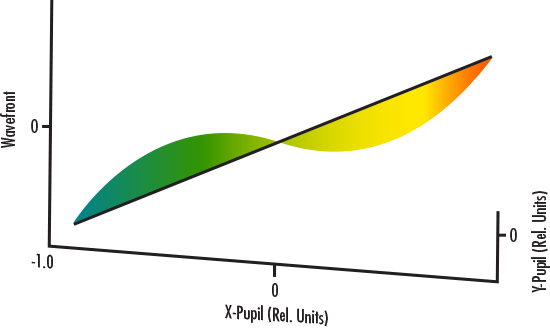

As optical applications continue to increase in complexity, their performance requirements are becoming more demanding and are often no longer met by the standard tolerances of spherical lenses.
Therefore, the next generation of spherical lenses must have tighter diameter, centration, and surface quality tolerances. These specifications facilitate “drop in” assemblies, which reduces the need for complicated assembly procedures such as active alignment, eases alignment, and reduces wavefront error. The looser specifications of previous spherical lens generations no longer hold the level of precision required to meet the increasing demands of future applications.
Beyond these tightened tolerances, the future of standard lenses could be quite different from conventional spherical lenses as increasingly demanding applications continue to require even higher performing optics.
Recognizing the need for higher performing optics, Edmund Optics has tightened the standard tolerances of all TECHSPEC® spherical lenses.
|
|
New tightened standard tolerances for ease of integration |
|
|
All TECHSPEC® spherical lenses now held to a diameter tolerance of +0.000/-0.025mm |
|
|
All TECHSPEC® spherical lenses now held to a scratch-dig value of 40-20 |
|
|
All TECHSPEC® singlet lenses with a focal length >10mm now feature a centration of <1 arcminute |
|
|
Facilitate "drop in" assemblies, reducing the need for complicated assembly procedures such as active alignment |
Centration errors in a lens produce tilt and axial coma, which can be detrimental to wavefront error, resolution, and encircled energy. Lenses without our tightened centration tolerance will suffer in these areas. The 3D wavefront plot below shows the wavefront error from a 3 arcmin centration error in our 25mm diameter x 100mm focal length aspheric lens #89-442. This 3 arcmin centration error caused a PV wavefront error of 3λ/4 at 532nm, but tightening the centration tolerance to the new TECHSPEC® centration tolerance of 1 arcmin reduces the PV wavefront error to λ/4 at 532nm.

 What is the benefit of the improved diameter tolerance?
What is the benefit of the improved diameter tolerance?
 Why is the tightened centration specification important?
Why is the tightened centration specification important?
This precision alignment of the optical axis ensures the lenses can be used in demanding imaging applications. When combined with the precision diameter tolerances, this reduced wedge specification leads to minimal image runout in an optical assembly.
This precision cosmetic specification ensures the lenses can be used in demanding laser-based systems. Even minor scratches or pits on the optical surface can lead to scattered light, which can be detrimental in laser-enabled applications. Surface quality also impacts the laser damage threshold of a lens. Lenses with poor surface quality may fail when subject to moderate laser power or fluence. Scratches and digs in a lens could cause laser light to scatter back and forth, destroying the coating.
weitere regionale Telefonnummern
ANGEBOTSTOOL
Geben Sie zum Starten die Produktnummer ein.
Copyright 2023 | Edmund Optics, Ltd Unit 1, Opus Avenue, Nether Poppleton, York, YO26 6BL, UK
Die Edmund Optics GmbH Deutschland fungiert als Handelsvermittler für die Edmund Optics Ltd. in Großbritannien.
Vertragspartner ist die Edmund Optics Ltd. in Großbritannien.